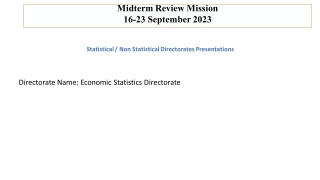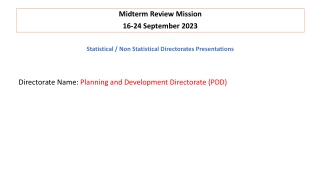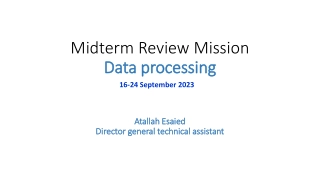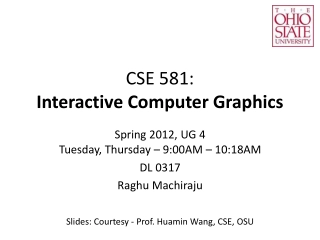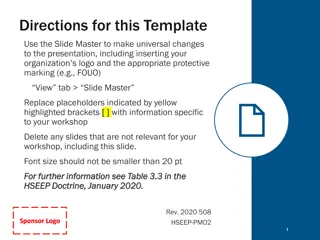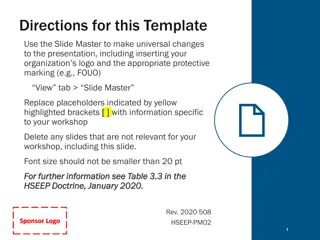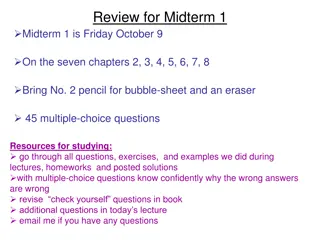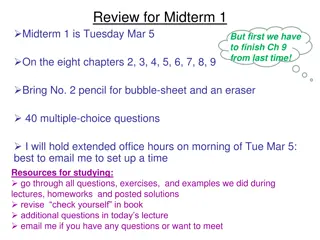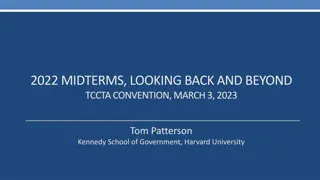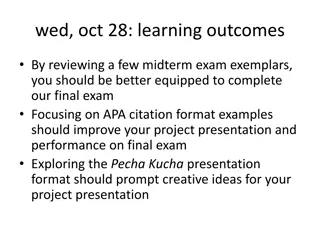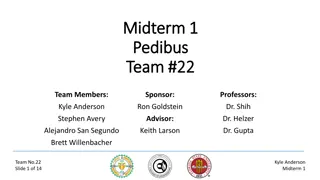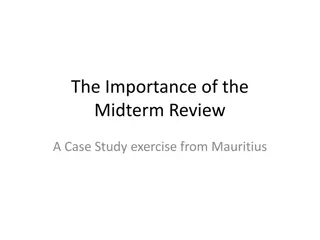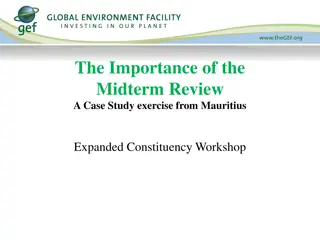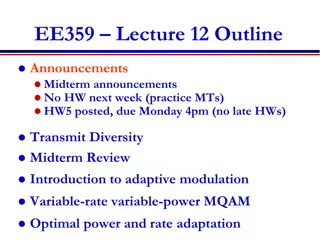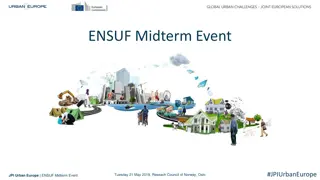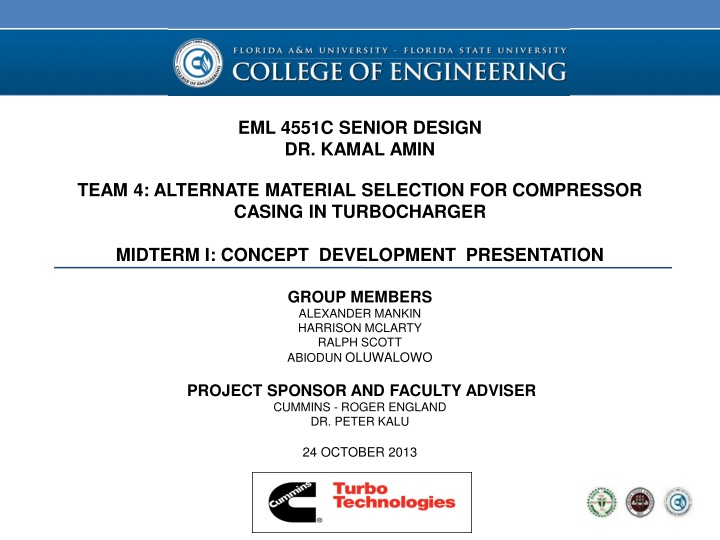
Senior Design Project: Alternate Material Selection for Turbocharger Compressor Casings
"Explore the development of cost-effective materials to replace cast aluminum 356 in turbocharger compressor casings for Cummins. Understand project scope, objectives, challenges, and future plans in this innovative engineering endeavor."
Download Presentation

Please find below an Image/Link to download the presentation.
The content on the website is provided AS IS for your information and personal use only. It may not be sold, licensed, or shared on other websites without obtaining consent from the author. If you encounter any issues during the download, it is possible that the publisher has removed the file from their server.
You are allowed to download the files provided on this website for personal or commercial use, subject to the condition that they are used lawfully. All files are the property of their respective owners.
The content on the website is provided AS IS for your information and personal use only. It may not be sold, licensed, or shared on other websites without obtaining consent from the author.
E N D
Presentation Transcript
EML 4551C SENIOR DESIGN DR. KAMAL AMIN TEAM 4: ALTERNATE MATERIAL SELECTION FOR COMPRESSOR CASING IN TURBOCHARGER MIDTERM I: CONCEPT DEVELOPMENT PRESENTATION GROUP MEMBERS ALEXANDER MANKIN HARRISON MCLARTY RALPH SCOTT ABIODUN OLUWALOWO PROJECT SPONSOR AND FACULTY ADVISER CUMMINS - ROGER ENGLAND DR. PETER KALU 24 OCTOBER 2013
Outline Project Scope Project Background Project Objectives Design Concepts and Evaluation Potential Challenges and Risks Brief Future Plans Outline Gantt Chart Final Summary References Questions
Project Scope Cummins has an interest in researching and selecting alternate materials to fabricate compressor casings in their B series turbochargers This alternate material should ultimately be more cost effective than the current one in use, cast aluminum 356, and still satisfy the design and operational parameters set by Cummins Fig.1: View of turbocharger.[5] Estimates of manufacturing costs for this alternate material and 3 full scale prototypes are key requirements Ralph Scott
Project Background Figure 1. Schematic of how a turbocharger operates Ralph Scott
Project Background cont. A cost efficient material which could replace cast aluminum 356 presents many beneficial opportunities for Cummins The revenue gained from more cost efficient materials and manufacturing processes present financial advantages for Cummins Production numbers on compressor casings and turbochargers have the potential to grow allowing the company to meet and exceed the expectations of customers Ralph Scott
Project Objectives Determine the temperatures, pressures, and stresses experienced by the compressor during operation Research and compare materials which can operate under these prescribed physical conditions, and are cheaper both as a material and to manufacture Estimate manufacturing costs with this new material and compare it to cast aluminum 356, which is currently used to fabricate the casings With the known operational conditions and alternate material known, utilize Finite Element Analysis in conjunction with a CAD model of the casing for analysis Obtain three prototypes of these casings for testing and experimentation Ralph Scott
Design Concepts Operational Conditions for Compressor Figure 2. Experimental data of turbocharger supplied by sponsor Ralph Scott
Design Concepts cont. Design Specifications Casing must possess the same design and geometric tolerances currently in place on the compressor in Cummins turbocharger Alternate material must be able to safely and continuously operate at temperatures up to 230 Also, based on the data provided by the sponsor, the casing should be able to withstand pressures up to 215 kPa Ralph Scott
Design Concepts cont. Performance Specifications Material must be able to withstand cyclic temperatures including below freezing atmospheric conditions Compressor casing must be able to withstand and contain a catastrophic failure of the compressor blades caused by over boosting, without fracturing Corrosion resistance is also an important requirement due to the presence of oil, dirt, water, engine coolant, salt, and other chemicals during the operation of an automobile Ralph Scott
Design Concepts cont. Why replace the current Aluminum alloy? Reduce the overall cost of production with a cheaper alternative Reduce the overall operating cost Reduce the weight of the casing Ralph Scott
Design Concepts cont. Figure 3. Properties of cast aluminum 356. (3) Ralph Scott
Design Concepts cont Possible Material Candidates Polymers Thermoplastics Thermosetting Plastics Fiber-Reinforced Polymers(FRP) Ceramics Ceramic Matrix Composites(CMCs) Metals Magnesium Metal Matrix Composites(MMCs) Alex Mankin
Design Concepts cont. Aluminum 356 Extem UH Tensile Strength, Yield: >= 124 MPa Tensile Strength, Yield: 120 MPa Elongation @ Break: >= 3.0% Elongation @ Break: 19-20% Hardness, Brinell: 45-75 (500g 10mm ball) Izod Impact: .750 J/cm Solidus/ Max Operating Temp.: 557 C Continuous Operating Temp.: 230 C Machinability: 50% (from 0-100) Machinability: N/A Deflection Temp. (264 psi): 231 C Alex Mankin
Design Concepts cont. Extem UH Advantages Limitations Can Operate at the required 230 C max temperature Performs well below 0 to 230 C Highly chemical resistant Tensile strength is almost equal to that of aluminum 356 Unknown cost of the material At any temperatures higher than 257 C it will start to soften Will require a different manufacturing method than that of the aluminum Alex Mankin
Design Concepts cont. Aluminum 356 Fluorosint 500 Tensile Strength, Yield: >= 124 MPa Tensile Strength, Yield: 7.58 MPa Elongation @ Break: >= 3.0% Elongation @ Break: 30% Hardness, Brinell: 45-75 (500g 10mm ball) Izod Impact: .481 J/cm Solidus/ Max Operating Temp.: 557 C Continuous Operating Temp.: 260 C Machinability: 50% (from 0-100) Machinability: 2 (from 1-10) Deflection Temp. (264 psi): 132 C Alex Mankin
Design Concepts cont. Fluorosint 500 Advantages Limitations Much lower Tensile strength compared to aluminum 356 High cost estimate Currently can only be ordered in thin sheets or tubes Will require a different manufacturing method due to shape of material available Can operate at a continuous temperature of 260 C Has a thermal expansion rate close to aluminums Non-abrasive to most mating materials Good wear characteristics Easy to machine Alex Mankin
Design Concepts cont. Aluminum 356 PEEK - 30% Carbon-Filled Tensile Strength, Yield: >= 124 MPa Tensile Strength, Yield: 186 MPa Elongation @ Break: >= 3.0% Elongation @ Break: 1.1% Hardness, Brinell: 45-75 (500g 10mm ball) Izod Impact: .481 J/cm Solidus/ Max Operating Temp.: 557 C Continuous Operating Temp.: 260 C Machinability: 50% (from 0-100) Machinability: N/A Deflection Temp. (264 psi): 316 C Alex Mankin
Design Concepts cont. PEEK - 30% Carbon-Filled Advantages Limitations Can operate at a continuous temperature of 260 C Excellent impact, and tensile characteristics Exceptional chemical resistance Outstanding wear and abrasion resistance Low smoke and toxic gas emissions Is the most brittle of the materials with a elongation of only 1.1% May be more difficult to machine due to its brittleness Alex Mankin
Design Concepts cont. Rulon 945 Aluminum 356 Tensile Strength, Yield: >= 124 MPa Tensile Strength, Yield: 20.7 MPa Elongation @ Break: >= 3.0% Elongation @ Break: 20% Hardness, Brinell: 45-75 (500g 10mm ball) Izod Impact: N/A Solidus/ Max Operating Temp.: 557 C Continuous Operating Temp.: 288 C Machinability: 50% (from 0-100) Machinability: N/A Deflection Temp. (264 psi): N/A Alex Mankin
Design Concepts cont. Rulon 945 Advantages Limitations Can operate at a continuous temperature of 288 C Low deformation under load and high impact resistant Excellent abrasion and corrosion resistance A low Tensile Strength to that of aluminum Will require a different manufacturing method than that of the aluminum Alex Mankin
Potential Challenges and Risks Running into cost issues with any of the materials we choose Finding a Machinist or company that would be willing and able to machine a prototype compressor casing out of the material we eventually decide on Once the prototype is made, having it put under proper testing to evaluate its performance Alex Mankin
Future Plans Final selection of material Prototyping and testing Determine type of manufacturing process Determine cost for material and manufacturing process Alex Mankin
Gantt Chart Alex Mankin
Final Summary Our task is to come up with an alternative material for a turbocharger compressor casing Using the operating conditions provided to us by Cummins we can determine which materials are suitable We have researched many different materials that met our criteria We found that polymers were the best option to reduce cost and weight No choice yet, more research is needed Alex Mankin
References 1. "Turbo Torque." Turbo Torque. N.p., n.d. Web. 21 Oct. 2013. <http://www.mazdarotary.net/turbo.htm>. 2. "Online Materials Information Resource - MatWeb." Online Materials Information Resource - MatWeb. N.p., n.d. Web. 21 Oct. 2013. <http://www.matweb.com/>. 3. "Plastic Sheet, Plastic Rod, Plastic Tubing - Buy Online." Plastic Sheet, Plastic Rod, Plastic Tubing - Buy Online. N.p., n.d. Web. 21 Oct. 2013. <http://www.professionalplastics.com/>.

